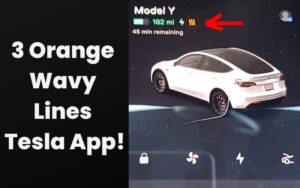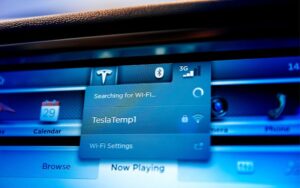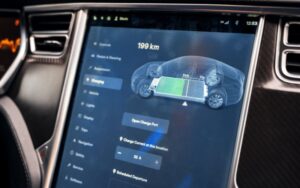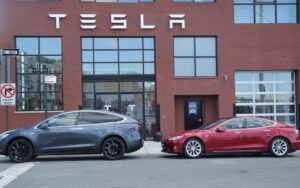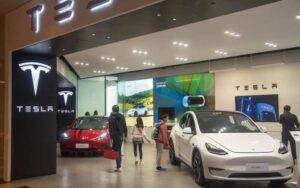Tesla Coasting Vs. Regenerative (In-Depth Comparison)
Last updated on April 18th, 2023 at 11:17 pm
Tesla is well-known for manufacturing the best electric automobiles with excellent systems.
However, the Coasting vs. regenerative debate is one familiar among Tesla users.
According to most tesla users, Coasting is better than regenerative in more scenarios.
However, these results are just opinions from users. So coasting or regenerative braking, which is better?
Regenerative is better because it converts kinetic energy from braking to electricity to recharge the battery. But when it comes to efficiency in slow driving for a long distance, Coasting is better. Nevertheless, the two techniques are excellent with your Tesla in different situations.
This article will use a detailed comparison to determine which is best between Coasting and regenerative. And with the pros and cons, you can decide which is better.
What Is the Difference Between Tesla Coasting and Regenerative Braking?
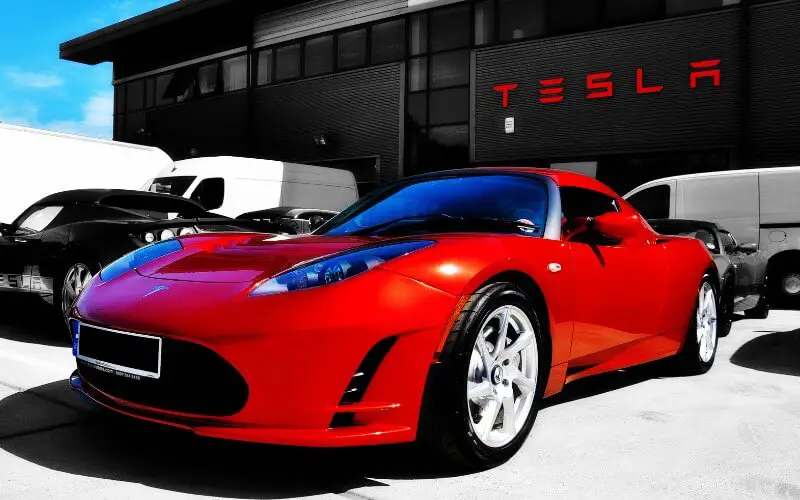
Tesla coasting occurs when you’re not pressing the accelerator down too much or less (somewhere in between).
In contrast, regenerative braking activates when you reduce pressure on the accelerator.
Regen (regenerative braking) happens when you’re going over eight mph, and the speed display shows it during regenerative braking (energy recovery).
And for Coasting, you can tell when there’s no indication of recovery energy.
Before going deep and explaining the difference between Tesla coasting and regenerative braking, it’s ideal to get the basic idea of the two.
#1. What Is Coasting
Coasting means driving without power or the use of fuel. It’s driving with your car on neutral or when you clutch down fully.
It’s also known as ‘free Wheeling’; It’s a state when you are neither accelerating nor regenerating.
However, Coasting takes place purposely or un purposely. For example, for fuel cars, you may decide to coast while driving down the hill to save fuel.
But saving fuel isn’t true. Although you might save fuel when reducing acceleration when in neutral, you are still using fuel.
In neutral, the car is still using little of the car’s power to keep the engine on and moving.
Power consumption while Coasting also applies to your Tesla and other electric cars.
However, Coasting is only advisable for drivers to practice sometimes; it’s dangerous and still consumes power.
Also, you can coast in two ways when driving your Tesla. First, you can coast when in neutral.
Nevertheless, Setting it to neutral is the best way to coast your Tesla for a longer distance.
And the second way is trying to balance your pedal in a specific position while monitoring the speed display. When the line goes left, or it’s green, then the car activates Regen.
And when you press the pedal to a specific position somewhere between accelerating and Regen, that’s coasting.
Also, drivers often coast when parking or when you decelerate over some distances.
#2. What Is Regenerative Braking
In simple terms, regenerative braking is safer without stressing the brake pads.
Instead, as the name implies, it regenerates kinetic energy to help charge your car’s battery.
In a nonelectric car braking system, the brake pads use friction on the brake rotors to stop or slow your car.
But an electric motor works in the regenerative braking of electric/hybrid cars.
So instead of using friction, the motor moves in the opposite direction to reduce the acceleration.
And in return, the heat energy from the braking system here turns to power for the battery.
Every car, including the ones with regenerative braking, has friction brakes. The friction brakes work well in extreme brake situations, like braking from full speed.
Regenerative braking is different from coasting your Tesla. It helps to bring your car to a stop gradually at a reasonable rate.
And at the same time, it charges the Tesla’s battery. Regen is a conservative power system for the vehicle, which differs from the sole purpose of Coasting.
Regenerative braking reduces your speed rapidly, while Coasting allows you to drive longer while reducing speed.
With the various explanations of coasting and regen braking, you can understand how different they are. Regenerative is a safer way to slow your system for a shorter period.
And Coasting is a way to slow down acceleration for a longer distance. And you can use these two methods interchangeably too.
Nevertheless, let’s see the essential similarities between the two below.
| Coasting | Regenerative braking |
|---|---|
| They help reduce speed over long distances. | It helps to reduce speed over short distances. |
| It helps to come to a gradual stop. | It helps to put your car to a stop quickly. |
| It Reduces the use of power consumption. | It reduces power consumption and restores some energy to the battery. |
Is Tesla’s Regenerative Braking Better than Coasting?
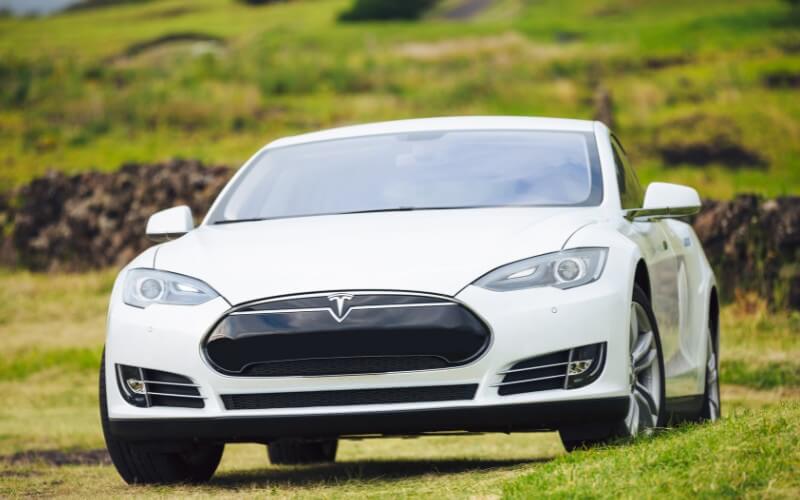
Regenerative braking is better than braking, and Coasting is better efficient in slow driving than regenerative braking.
But if you are looking for efficiency, coasting it better. However, determining which is better for Tesla’s regenerative braking and coasting depends on the situation.
And you, as the driver, will be in the right spot to choose which is better. Regenerative braking is better than coasting primarily because of its system mechanism.
It converts the kinetic energy to electricity to charge the car’s battery and increase efficiency. It’s an advanced technology you will find in most electric cars nowadays.
This braking system eliminates problems with the regular braking system, such as wearing away the brake plates.
Instead of wasting all the energy while moving slowly, regenerative braking uses some of this energy to recharge your battery.
In cars like the Tesla, you can tune the regenerative braking to your preference. Also, the braking system is one crucial aspect of the car’s system.
However, there’s no turn-on/off button for regenerative brakes on your electric car or your Tesla. You only turn it on when you activate it, but there’s no switch/button on the car.
Regen is only a feature every Tesla has; it has a Regen setting to control the settings.
For example, the settings ‘Low / Standard’ either reduces or increases the rate of regenerative braking.
So in operation and convenience, regenerative braking takes the lead. Coasting is inconvenient when trying to balance the pedal at a specific position.
However, For the aspect of the millage, Coasting is probably better. It’s better to coast when reducing the speed limit on the road.
That way is better and safer than just using Regen immediately. In regenerative braking, there is low efficiency when you try to accelerate to top speed again.
Also, when it comes to making a perfect stop, Coasting is better because Regen only partially stops your car. Instead, the brake will give the final stop.
Another reason regenerative braking beats coasting is that regenerative braking obstructs good Coasting with your Tesla.
You can turn off the regenerative braking on your Tesla and coast freely. Tesla users will choose to coast over regenerative braking and still choose Regen to be safer.
However, it depends on you as the driver; you can get the best from both if you use them correctly. Finally, stick with regenerative for your Tesla for a better experience.
However, the autopilot feature in your Tesla is an alternative option to the coast or to use regenerative braking.
What Are the Pros and Cons of Coasting on a Tesla?
Coasting on a Tesla has some advantages and disadvantages as a driving technique. However, it’s also not advisable to coast for some reasons.
So now, let’s see the pros and cons below.
#1. Pros
Coasting enables you to travel longer distances slowly before engaging the engine. Also, it proves helpful in a situation when you are driving from a slope.
Coasting mode in Tesla is good because it allows your car to drive without power for some distance slowly. And when the car requires driving with power, you can quickly accelerate.
#2. Cons
Coasting is a threat to the driver’s life in some aspects. For instance, you can’t brake or accelerate quickly during emergencies.
In addition, at the moment of Coasting, you have little control over your car. It’s hazardous in situations like traffic, where you have no control over acceleration.
For instance, it takes work to do that fast when you want to change gears from neutral in sudden situations.
Another major con is damage to your car. Aside from the damage to your car, it affects other parts, also. When you’re coasting, you are not driving with the engine on.
Although, there’s reliance on some parts, like the brake precisely. If you are maintaining the speed with brakes, you are causing damage to the brakes.
What Are the Pros and Cons of Regenerative Braking on a Tesla?
Regenerative braking on a Tesla has more pros than cons. But there are still instances that regenerative braking is wrong.
#1. Pros
It converts the wasted energy in your cars to helpful electric power for recharging the battery.
Also, your electric car battery lasts longer with the regenerative braking system.
Another advantage of regen braking is that you don’t need to hold the brakes while trying to reduce speed in regen braking. And your brake will last longer this way.
#2. Cons
A disadvantage is that one of your feet must be on the accelerator to use regenerative braking, or the car will stop.
However, some drivers prefer using a one-pedal driving system. It would help if you had a certain level of one-pedal driving skills.
Besides, mastering one-pedal driving still is beneficial, especially when city driving. However, you can monitor the speed from your speed display.

Hey, I’m Michael Davis, a 35-year-old with a degree and a love for cars and tech. Since I was a kid, cars have been my thing—so much that I even thought they ran on magic beans! Fast forward, and I’ve built Vehicle Army, your one-stop-shop for easy-to-understand car facts.

